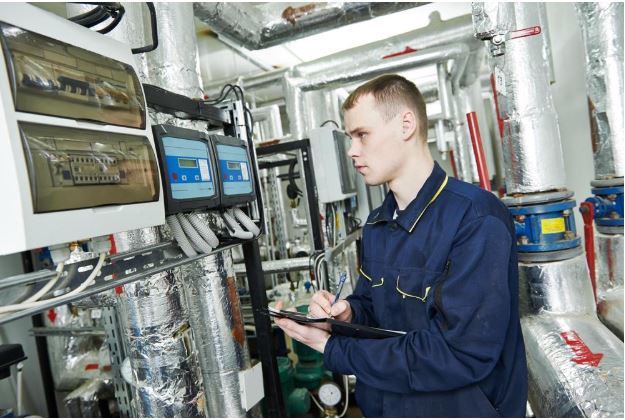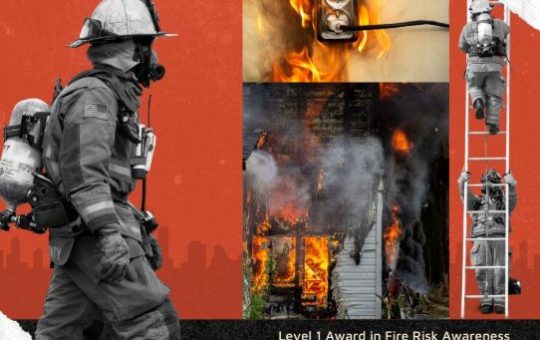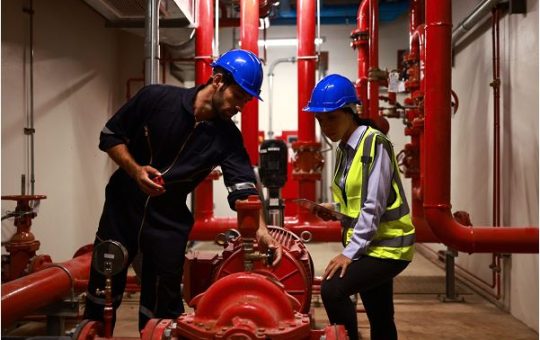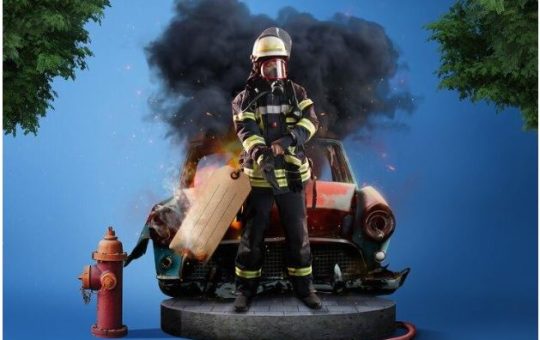
FIRE INSPECTOR LEVEL 3
Fire Inspector Level 3 Course
Course OverviewThe Fire Inspector Level 3 course is the highest tier of training for fire inspection professionals, focusing on advanced regulatory compliance, risk management, and fire investigation techniques. This course prepares participants to handle complex fire safety challenges, lead inspection teams, and contribute to fire safety policy development at an organizational or governmental level.Designed for experienced professionals, this course emphasizes strategic leadership, advanced fire safety system evaluations, and developing comprehensive fire safety programs. It combines theoretical concepts with practical case studies and simulations to ensure real-world application.Benefits- Expertise in Fire Safety: Achieve mastery in fire inspection, investigation, and risk mitigation.
- Leadership Training: Prepare for managerial and strategic roles in fire safety.
- Advanced Technical Skills: Learn cutting-edge inspection techniques and system evaluations.
- Policy Development: Gain skills to draft and implement fire safety regulations and policies.
- Professional Recognition: Attain qualifications recognized globally, boosting career prospects.
- Lead and supervise complex fire inspection programs.
- Analyze and interpret fire safety data for policy development.
- Conduct detailed investigations into fire incidents and their causes.
- Develop and implement advanced fire safety management systems.
- Ensure compliance with international fire safety codes and standards.
- Collaborate with architects, engineers, and policymakers to enhance fire safety infrastructure.
- Job Roles:
- Chief Fire Inspector
- Fire Safety Consultant
- Risk Management Specialist
- Fire Safety Policy Advisor
- Further Training:
- Certified Fire Investigator (CFI)
- Certified Fire Protection Specialist (CFPS)
- Advanced Leadership and Management Courses
- Industries:
- Oil and Gas
- Construction and Engineering
- Government and Regulatory Agencies
- Large-Scale Manufacturing and Industrial Plants
- Strategic Career Pathways:
- Graduates of this course can lead fire safety teams, contribute to national safety standards, and work on international fire safety projects.
Study Units
The Fire Inspector Level 3 course includes the following comprehensive modules:
- Advanced Fire Safety Regulations and Standards
- Detailed analysis of international fire codes (e.g., NFPA, BS EN standards)
- Adapting codes for local and industry-specific needs
- Leadership in Fire Safety Management
- Supervising and mentoring fire inspection teams
- Strategic planning for fire safety programs
- Complex Fire Safety Systems Evaluation
- Advanced inspection techniques for modern fire protection systems
- Assessing and optimizing fire alarms, sprinklers, and suppression systems
- Fire Investigation Techniques
- Identifying fire origins and causes
- Collecting and analyzing evidence for legal and regulatory purposes
- Risk Management and Hazard Analysis
- Conducting in-depth risk assessments for high-risk facilities
- Developing mitigation strategies for large-scale hazards
- Emergency Preparedness and Incident Management
- Designing and implementing evacuation and emergency response plans
- Coordinating with emergency services during incidents
- Policy and Program Development
- Drafting fire safety policies and inspection protocols
- Monitoring and auditing organizational compliance
Upon successful completion of this qualification, learners will be able to:
Lead Fire Inspection Operations: Plan, coordinate, and oversee comprehensive fire inspection programs across multiple facilities or jurisdictions.
Interpret and Apply Fire Safety Standards: Demonstrate mastery of national and international codes such as NFPA, BS EN, and local regulatory frameworks.
Conduct Advanced Fire Investigations: Determine fire origins, analyze contributing factors, and prepare detailed technical and legal reports.
Evaluate Complex Fire Protection Systems: Inspect, test, and assess advanced suppression, detection, and alarm systems for operational integrity.
Develop and Implement Fire Safety Policies: Design and enforce organization-wide or regional fire safety policies and compliance procedures.
Perform Risk Analysis and Hazard Assessment: Utilize analytical tools to evaluate risks and implement strategic mitigation and control measures.
Collaborate with Stakeholders: Work effectively with architects, engineers, emergency responders, and policymakers to enhance fire safety outcomes.
Lead and Mentor Teams: Manage inspection staff, conduct audits, and foster professional development within fire safety departments.
Promote Continuous Improvement: Establish performance metrics and review mechanisms to ensure ongoing fire safety enhancement.
The Fire Inspector Level 3 Course is designed for experienced fire safety professionals seeking to advance into leadership and technical specialist roles in fire inspection, investigation, and compliance management. It is suitable for:
Fire Inspectors and Officers aiming to progress into senior or supervisory inspection roles.
Health & Safety Managers responsible for overseeing fire risk management systems in large or high-risk facilities.
Fire Engineers and Consultants involved in designing, auditing, or certifying fire protection systems.
Regulatory and Enforcement Officials working with municipal, industrial, or governmental fire safety departments.
Emergency Response and Risk Professionals engaged in fire investigation, prevention, and hazard mitigation.
Architects, Facility Managers, and Compliance Advisors contributing to the development of fire safety strategies.
Individuals Aspiring to Leadership positions in national or international fire safety and inspection authorities.
Our assessment process is designed to ensure every learner achieves the required level of knowledge, skills, and understanding outlined in each course unit.
Purpose of Assessment
Assessment helps measure how well a learner has met the learning outcomes. It ensures consistency, quality, and fairness across all learners.
What Learners Need to Do
Learners must provide clear evidence that shows they have met all the learning outcomes and assessment criteria for each unit. This evidence can take different forms depending on the course and type of learning.
Types of Acceptable Evidence
Assignments, reports, or projects
Worksheets or written tasks
Portfolios of practical work
Answers to oral or written questions
Test or exam papers
Understanding the Structure
Learning outcomes explain what learners should know, understand, or be able to do.
Assessment criteria set the standard learners must meet to achieve each learning outcome.
Assessment Guidelines
All assessment must be authentic, current, and relevant to the unit.
Evidence must match each assessment criterion clearly.
Plagiarism or copied work is not accepted.
All learners must complete assessments within the given timelines.
Where applicable, assessments may be reviewed or verified by internal or external quality assurers.
Full learning outcomes and assessment criteria for each qualification are available from page 8 of the course handbook.
Top Courses
Related Courses
Let's Get in touch
Deleting Course Review
Course Access
This course is password protected. To access it please enter your password below:



